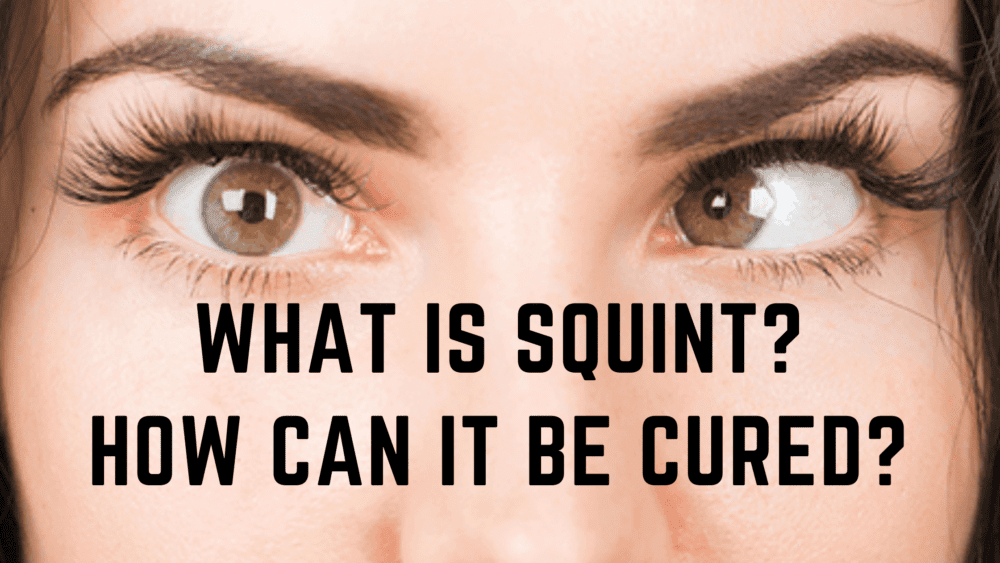Squint is also known as strabismus. It is an eye condition in which the eyes are unable to align properly. There is an occurrence of one eye turning upwards, downwards or outwards, whereas the other stays where it is. This usually happens when the extraocular muscles which coordinate eye movement are unable to work cohesively. This problem can also be credited to a problem in the brain.
This condition makes binocular vision almost impossible and makes it difficult for a person to perceive depth accurately.
Reports say that about 4 percent of the people in the US alone suffer from this eye disorder.
Types of Squint / Strabismus
Strabismus can be classified on the basis of the defective position of the eye or on its cause.
According to different eye positions, Strabismus can be classified as follows:
Hypertropia occurs when the eye turns upwards
- Hypotropia occurs when the eye turns downwards
- Esotropia occurs when the eye turns inwards
- Exotropia occurs when the eye turns outwards
Doctors recommend correcting Strabismus as soon as possible. Earlier, people believed that the condition was incurable after a “critical period,” but now, it has been found that this condition can be corrected. However, correcting Strabismus at the age of six has been considered to be “most effective.”
Signs and Symptoms in children
Squint can be easily detected at a very early age. If your child closes one eye and turns their head while looking at you, there is a high probability that your child has a double vision and a marked squint. A doctor’s help must be sought at the earliest.
Lazy eye
An untreated squint eye may lead to a condition known as “amblyopia” or “lazy eye.” This occurs when the brain completely cuts off the visual input it is receiving from one of the eyes. If the poor vision persists, a patch can be placed over the unaffected eye in order to encourage vision in the affected one.
Sometimes, a successfully treated squint in childhood might make a comeback in adulthood. In this case, a double vision occurs as the brain is used to receiving information from both the eyes and is unable to ignore the other.
Causes
Strabismus can be:
- congenital
- hereditary
- due to illness or long-sightedness
- due to a lesion on a cranial nerve
Sometimes, the eye is unable to focus on the light passing through the lens. This condition is called a refractive error. This type of Strabismus usually occurs at the age 2 or beyond.
There might be other problems due to this:
- myopia, or short-sightedness
- hypermetropia, or long-sightedness
- astigmatism, where the cornea is not curved properly
Other causes include hydrocephalus. It is defined as a condition in which too much cerebrospinal fluid builds up in and around the brain. Measles and Noonan’s syndrome can also lead to Strabismus.
Diagnosis plus treatment
Eye check-ups should be performed on babies and young children regularly. These tests must start at 9 months if the child’s eye turn is observed constantly.
Ophthalmologists usually use the Hirschberg test, or Hirschberg corneal reflex test to study the extend if this condition. They will pass light in the eyes and observe how the light is deflected from the corneas. The light will go straight through the centre of the corneas if the eyes are well aligned. If not, then the Strabismus is confirmed. Eye drops are used for dilating the pupils before performing this test.
Treatment options include:
- Glasses: For hypermetropia
- Eye patch: An eye patch is inserted in the unaffected eye to encourage the affected eye to receive visual input.
- Botulinum toxin injection, or botox: Usually injected when the exact cause if the squint isn’t determined. The Botox is injected into a muscle on the eye’s surface. This weekend the muscle and will correct the alignment of the eyes.
- Eye drops
- Eye exercises
- Surgery is done when the above treatments are ineffective. This can realign the eyes and restore binocular vision.
- Exercises: A standard type of exercise for strabismus is a home-based pencil pushup (HBPP).
To do HBPP, follow these steps:
- Take a pencil and hold it at arm’s length between the eyes
- Move the pencil towards the nose and maintain a single image while looking at it
- Move the pencil in this direction till no
- Hold the pencil at the closest point where a single image is possible
- Repeat the procedure if you are unable to gain a single image
So hopefully this helps you understand the exact meaning of squint surgery and how the does the treatment take place.

